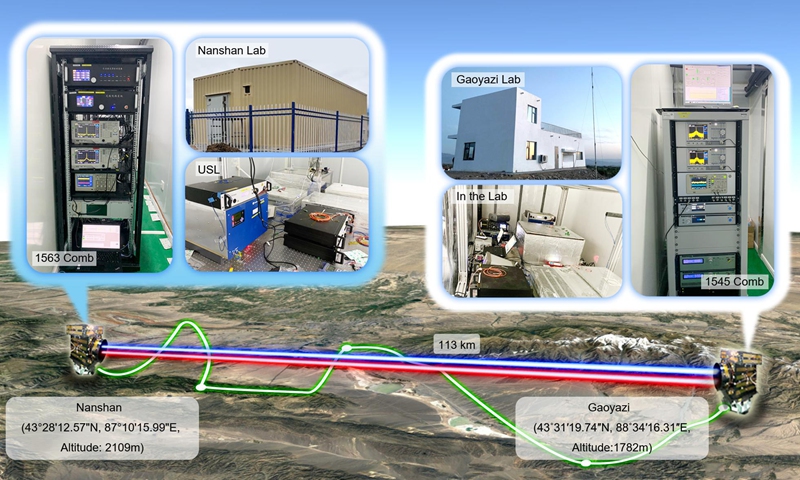Chinese scientists successfully complete free-space dissemination of time and frequency with E-19 instability over 113 km

Schematic diagram of the experiment Photo: research team
Chinese scientists have realized the experiment on free-space high precision time and frequency dissemination across 113 kilometers for the first time in the world, with dissemination of time stability reaching the femtosecond level, which can meet the time dissemination requirements of the optical clock with the current highest precision.
This achievement in basic scientific research is expected to have major applications in the study of fundamental problems in physics, from navigation, to gravitational wave detection, to dark matter search.
The relevant results were published online on Wednesday night in the international academic journal Nature, according to Chinese media.
The research was completed by the team of Pan Jianwei, China's leading quantum physicist at the University of Science and Technology of China and a Chinese Academy of Sciences (CAS) academician, together with cooperative institutes such as the Shanghai Research Center for Quantum Science and Xinjiang Astronomical Observatory.
In recent years the frequency instability for state-of-the-art optical clocks has reached the E-19 level, which can be used in precision navigation and positioning, global timing, wide-area quantum communication and basic principles of physics and will play an important role in the field of physics.
E-19 level means that a clock error is no more than one second in about 100 billion years, according to the report of the China News Service.
"Precise timing should not be limited to cold laboratories, but should also 'fly into ordinary people's homes,'" said Shen Qi, the first author of the article and an associate researcher at the University of Science and Technology of China. The expert also noted that there should be a time dissemination technology that matches the accuracy of the optical clock to spread precise time.
According to an abstract from the article, key technologies essential to this achievement include the deployment of high-power frequency combs, high-stability and high-efficiency optical transceiver systems and efficient linear optical sampling. The technique can not only be directly used in ground-based applications, but could also lay the groundwork for future satellite time-frequency dissemination.
Global Times

